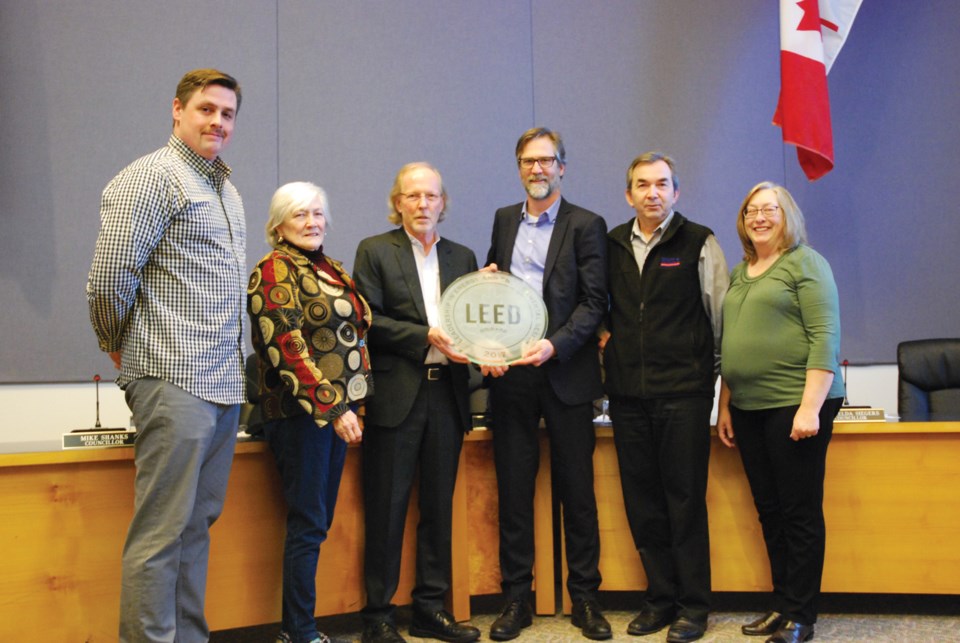Representatives of the consortium that built Sechelt’s Water Resource Centre (WRC) joined councillors and staff Feb. 7 to formally present the facility’s Leadership in Energy and Environmental Design (LEED) Gold certificate.
The $24.9-million facility was commissioned in 2015.
“This is now the seventh accolade for this project, and probably the best of the group because it really represents a lot of work that went into the project,” said Andrew Ambrozy, national business development manager of Maple Reinders.
Michael Nordquist, with Colliers International, said getting the LEED Gold designation was “a great achievement by the project team, including the district.”
According to the district, the LEED review committee awarded the centre, which was commissioned in early 2015, 62 out of a possible 100 points in the certification process.
Mayor Bruce Milne said the award will be prominently displayed at the Water Resource Centre.
“We do have a fair number of tours going through [the facility] just to see what was done, and this will be a confirmation when they arrive that the technical innovation was, indeed, world class,” he said.
Ambrozy said achieving the LEED Gold certification marks the end of the company’s formal contract with the district, but they are hoping to continue their association with the Water Resource Centre through a pair of initiatives.
“We’re working with UBCO [University of British Columbia – Okanagan] to get a masters program at this facility. There’s some indication that the process there takes care of pharmaceuticals. That’s the next level of treatment that has to happen nationally, and Sechelt could be on the leading edge of that,” Ambrozy said.
Ambrozy said the other initiative involves Organica, the Hungarian company that developed the technology used at the WRC. “They’ve been doing a lot of research and development. They want to optimize the plant and they also have some new technology that could increase capacity without any structural changes and they want to study that.”
Milne said Sechelt is especially interested in the work with UBCO on treating wastewater to remove pharmaceuticals. “We really do need a serious scientific approach to it,” he said.
The reclaimed water from the WRC meets the standards for non-potable uses, but without a major client to buy that water, most is discharged into the Salish Sea. The district has not yet pursued certification for reuse of the water for other uses.



